#mid 14th century
Explore tagged Tumblr posts
Text


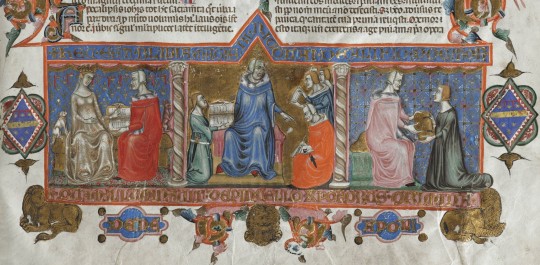
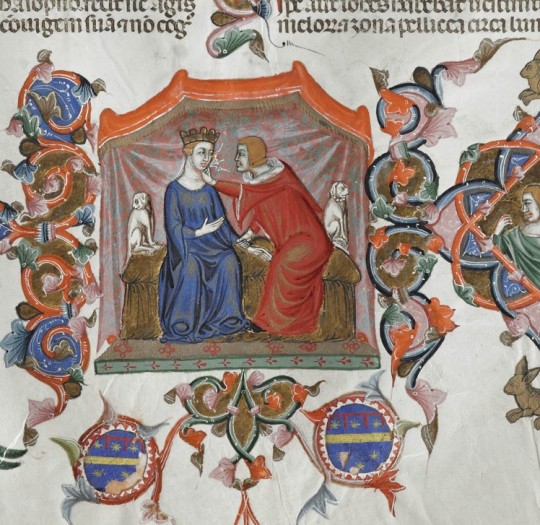
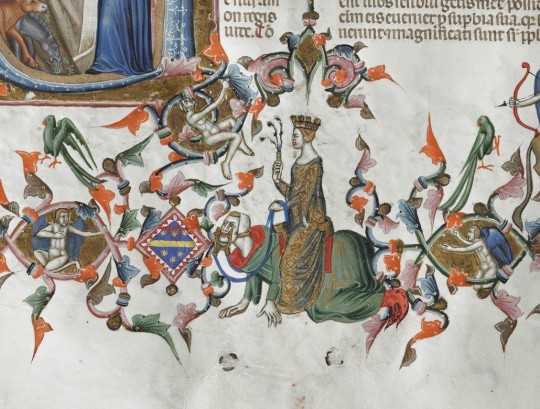



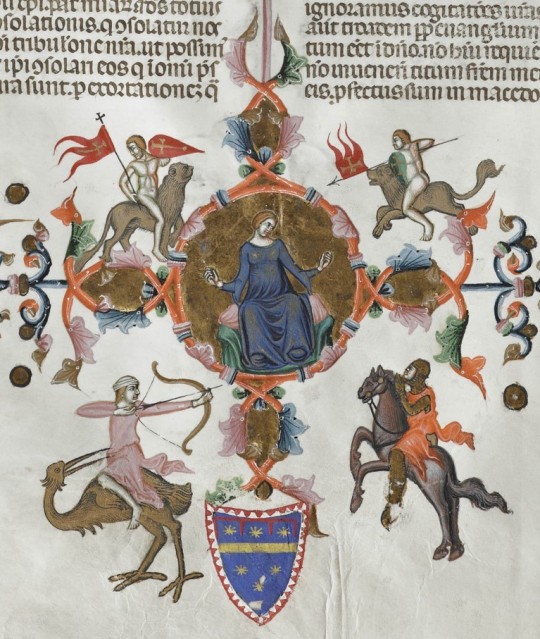
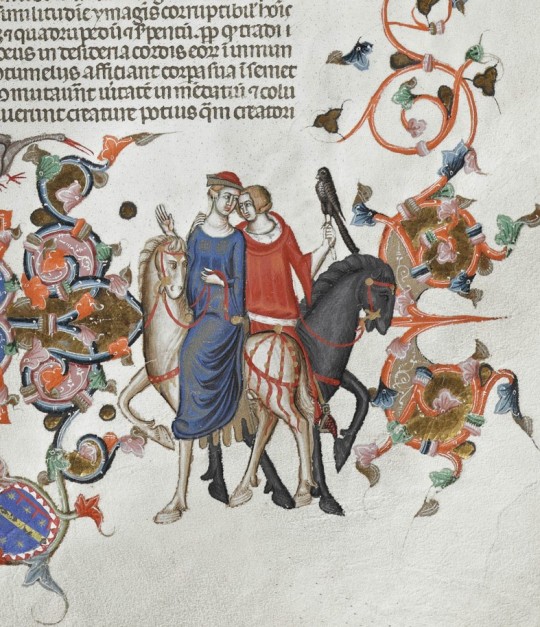
Illustrations from the Anjou Bible aka Naples Bible by Cristoforo Orimina and Iannutius de Matrice, c. 1340
#1340s#14th century#mid 14th century#Italy#illustrated manuscript#illuminated manuscript#manuscript#14th c. italy#mdp14th c.
372 notes
·
View notes
Text
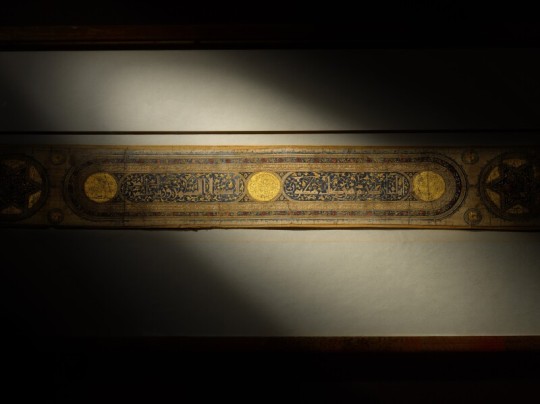




An illuminated section from a talismanic scroll Egypt, Mamluk, Mid-14th century
#An illuminated section from a talismanic scroll#Egypt Mamluk#Mid-14th century#calligraphy#ancient artifacts#art#artist#art work#art world#art news#archeology#archeolgst#history#history news#ancient history#ancient culture#ancient civilizations#ancient art#art history
155 notes
·
View notes
Text

PLAYABLE ZELDA PLAYABLE ZELDA PLAYABLE ZELDA PLAYABLE ZELDA PLAYABLE ZELDA PLAYABLE ZELDA PLAYABLE ZELDA *inhale* PLAYABLE ZELDA PLAYABLE Z
#zelda#echoes of wisdom#I still can't quite believe it's finally happening tbh! took ya long enough nintendo#anyway how are you!! sorry for the radio silence lately haha#my 7-year-old computer actually chose the week I was trying to finish my piece for the magic book zine to give up the ghost entirely#(luckily I just barely managed to coax it into hanging in there until after the deadline haha!)#so all my drawing lately has been like... experimenting to figure out how to use the newer versions of everything#I am old gandalf. I know I don't look it but I'm beginning to feel it#had a really good time drawing this though! playing around with new ways to do the light effects made me positively GIDDY#and zelda's design! I've seen people saying the game's visual design looks too simple but imo that's actually a good thing?#because the simpler the canon art style is the more creative input we have in our own interpretations of it#medieval tailoring is my special interest so my take on it is very loosely based on like mid-late 14th-century kirtles#as far as I know they didn't really have split skirts or that shade of purple back then but eh it's fantasy haha#I wasn't super clear on how the cloak fastens so I based it on the one frodo wears at the start of lord of the rings. you know the one#the outer edges have tabs at the top that sort of cross over each other and attach with brooches to the shoulders#I guess it's kind of like how marth and lucina's cloaks work?#but anyway I shall see you anon! hopefully before the game actually comes out haha#only 98 sleeps to go though! ARE YOU EXCITED BECAUSE I AM
15 notes
·
View notes
Text
brother william is talking about heretical movements again. his explanation, apparently in service of the idea that heretics don't do it because they're bad christians or bad people, is that these are mostly populist movements in which people denied power are encouraged to seize it. for the leaders of the movements, even if they believe they are seizing power for themselves. "The faith a movement proclaims doesn’t count: what counts is the hope it offers."
this is a cool perspective on heresies! they might be conceived by people who hang out and argue about theology all day, but they aren't living movements until they gain popular support. it's also making me feel "oh, duh!" marginalized people (here "lepers") have literally always been pissed off about being oppressed, but the language they used to talk about it a thousand years ago was religious language, not like the secular way we see popular movements talked about from around the 1600s on. like, the luddites or whatever. they may have given religious justifications for their position, but they're remembered for the position, not the justification! as brother william points out, a heresy is any idea that's inconvenient for the church, and because the church is doing the legislating its objections must be couched in religious terms.
"What must be done?" brother william asks. "Give learning to the simple? Too easy, or too difficult." if they had a sense of perspective they wouldn't be so easy to control! so, same as it ever was, really.
#notr#desperate to know how much of brother william's theory is like.#the way people actually talked and thought about this stuff in the mid 1300s vs 1970s italian political theory yk#presumably I could find this out very easily by just reading some roger bacon + william of occam#it IS fun that eco has made an OC who's friends with all the out-there theologians of 14th century britain
4 notes
·
View notes
Text
it bothers me so much when people have medieval or early early modern characters wear the plague doctor masks with the beaks, those didn't come about until the 17th century
#another historical plague fact: ''the black death'' only applies to the original major outbreak in the mid-14th century#fashion history#<-i guess ?#misc history
2 notes
·
View notes
Text
first time ever working on a cosplay where the question “how do you know if the dress is spiral laced or cross laced?” can be answered with “because you can see the crossed laces coming undone in a 2 second shot in the sex scene”
#I mean#in the very few shots of the dress from the back without the coat overtop#you can see maybe the lowest two rows of grommets below the edge of Rhaenyra's hair#and extrapolate from those since they do seem to be parallel and not offset like spiral lacing would be#tho often the very first and very last grommets/eyelets in a spiral lacing panel are ALSO parallel before the offset spacing starts up#but really the sex scene on the beach is what makes it really obvious that it's cross laced not spiral laced#Daemon is most definitely pulling open crossed lacings there. not unwinding the single lacing ribbon of a spiral laced closure#weirdly enough the SLEEVES are spiral laced on#but the back closure is definitely cross laced#also I would like to thank HotD costume designer#Jany Temime#for making metal grommets period-appropriate for HotD costumes#the clothing shapes are all vaguely 12th-14th century#so if it was actually historically set then everything should be hand-bound eyelets and no metal grommets at all#since those weren't invented until the mid 19th century#(so anything set in say a Jane Austen/Regency era or earlier should ONLY have hand-bound eyelets not metal grommets)#but hey it's a fantasy world so if they want to say Westeros (or Essos) invented metal grommets by Rhaenyra's time SURE WHY NOT#I have done hand-bound eyelets on plenty of things and don't actually mind sewing them#but grommets are so much faster#cosplay plans#my cosplay#Rhaenyra's red dress#tagtalking
6 notes
·
View notes
Text










#photo collection#Norton Simon Museum#museum#art#14th century#seventeenth century#mid century#kandinsky#fine art#pablo picasso
1 note
·
View note
Text

What on earth did we miss in Our Flag Means Death for this to be a spoiler?
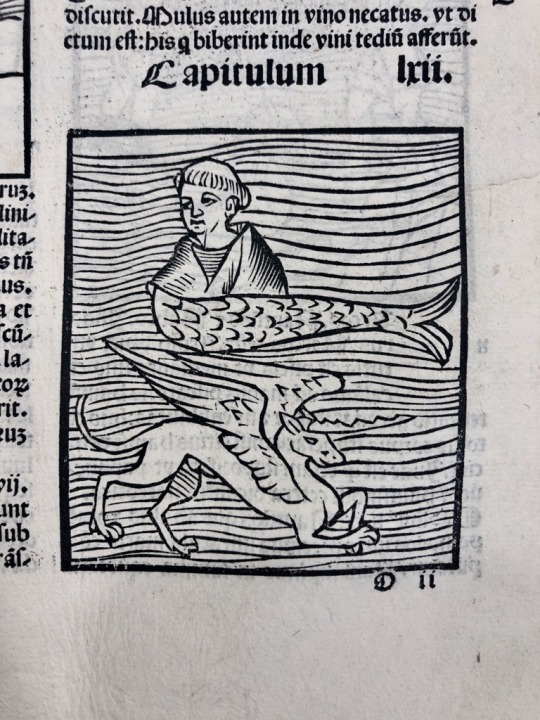
Our librarians have decided, without reading any of the 16th century Latin, that this image must be attempting to portray… A monkfish.
Illustration from the Ortus Sanitatis: de herbis & plantis (1511). From the Rare Books Collection, John Oxley Library, State Library of Queensland.
Source
#brb going insane#ofmd season 2#ofmd spoilers#ortus sanitatis#woodcut#monkfish#stede bonnet#ofmd s2#ofmd#state library#statelibraryqueensland#from the collections#medieval history#14th century#middle ages#manuscript#history#book#book history#libraries#support libraries#wait#I think I figured it out mid tag#oh tag op you are funny
250 notes
·
View notes
Text

#Trulli houses in Alberobello#Italy. Dating from the mid-14th century#the buildings are rectangular forms with conical corbelled limestone slabs. The whitewashed walls of the trulli are built directly onto lim#mortarless) technique.
1 note
·
View note
Text

Carved ivory mirror case with lovers, France, mid 14th century
from The Walters Art Museum
450 notes
·
View notes
Photo

Double figurine composed of the fore-quarters of facing cervids
Bronze, Iran in the Iron Age (14th–mid-6th century BC) and during the Neo-Elamite dynasties
3K notes
·
View notes
Text



Study of Vesna dressed in a red shift and mid 14th century noblewoman's dress with slashed sleeves, and curled braids. After a piece by Auguste Racinet. Gouache, black ink and red ink
402 notes
·
View notes
Text
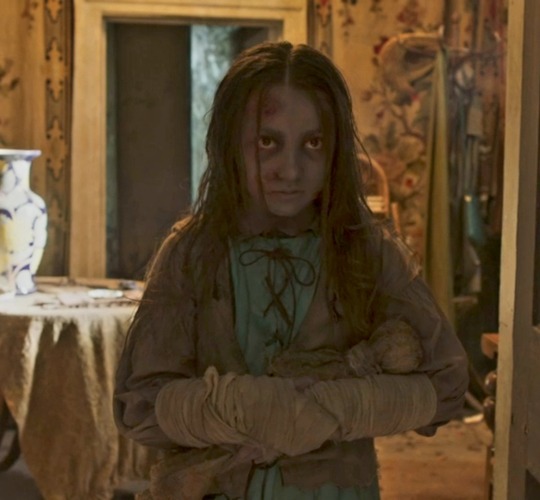

I'm sure this has been pointed out before but a lot of people seem to think Jemima is one of the children of the plague ghosts in the basement. But her clothes and her "ring a ring a rosies" song implies she's actually a victim of the Great Plague of the mid-17th century, as opposed to the Black Death which took the basement ghosts, who are from the 14th century. Would explain why she's not down there with them.
Opens up all sorts of questions of how a child of the plague died in the house. Was she a servant's kid? Had she just snuck in one day? Was the house abandoned for a time because of it being "condemned" until Kitty's dad bought it?
Also I love the detail of those bandages on her arms, whether they were for the sores she has or just all she had to keep warm, it breaks my heart. 🥺
(And now I get back to my Robin-adopts-her fic).
302 notes
·
View notes
Text
The Mid-Autumn Festival (中秋节), also known as the Mooncake Festival, falls on the 15th day of the eighth lunar month. It is called the Mid-autumn Festival because the 15th day is the middle of a month, and the eighth lunar month is in the middle of autumn. In Singapore, mooncakes and lanterns are offered for sale as early as a month before the festival. These days, however, it has become more common to give mooncakes as gifts than to eat them during the festival. The custom of offering sacrifices to the moon has been replaced by celebrating the festival with family and friends. Moon-viewing parties is one way to enjoy the occasion, with family and friends sitting in gardens lit by paper lanterns, sipping tea, nibbling on mooncakes, and if so inspired, composing poetry in venerable Tang Dynasty fashion.

The Full Moon is considered a symbol of reunion, as such the Mid-autumn Festival is also known as the Reunion Festival. Shaped round like the full moon, mooncakes signify reunion. The Mid-autumn Festival is associated with the moon and “moon appreciation” (赏月) parties, particularly because the moon is at its brightest during this time. The festival also coincides with the end of the autumn harvest, marking the end of the Hungry Ghost Festival, which occurs during the seventh lunar month. The day of the Mid-autumn Festival is traditionally thought to be auspicious for weddings, as the moon goddess is believed to extend conjugal bliss to couples.

Among the Chinese, the most popular of all the tales connected with the Mid-autumn Festival is that of Chang-E (嫦娥), also known as the Moon Lady, and her husband Hou Yi (后羿). This myth is said to have originated from storytellers in the Tang dynasty (618–907 CE), and even as far back as the time of Emperor Yao (2346 BCE).
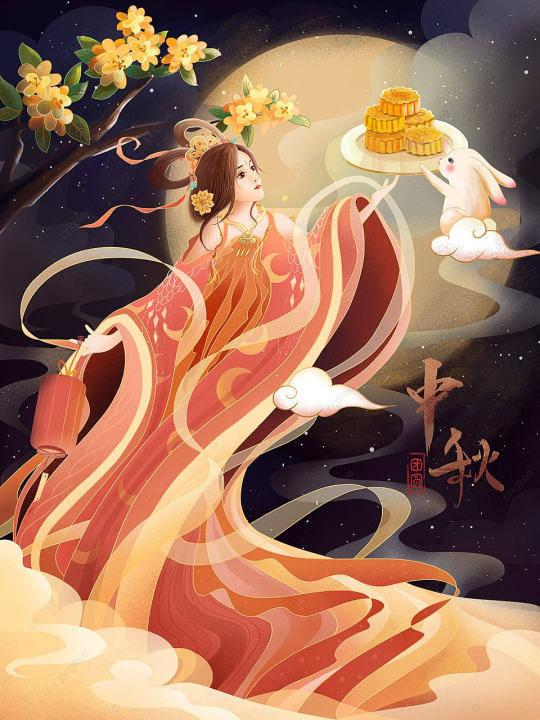
youtube
Hidden Messages in Mooncakes played a major role in the liberation of Yuan China (1206–1341 CE) from the Mongols in the 14th century. Despite a prohibition against large gatherings, rebel leader Zhu Yuan Zhang was able to instigate a rebellion by placing secret messages in mooncakes. The rebellion took place during the Mid-autumn Festival, and the celebration of the festival and eating of mooncakes took on a different meaning thereafter.
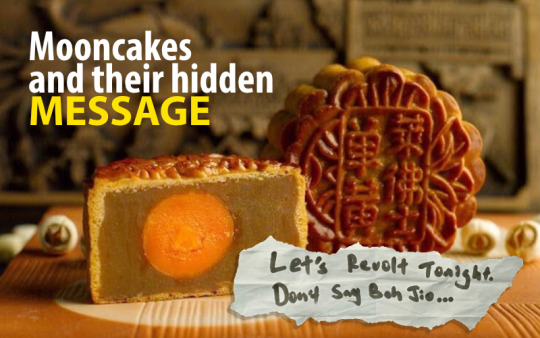
Information from National Library Board. Bo Jio literally meaning “not invited” in Hokkien.
#Mid-Autumn Festival#中秋节#Mooncake Festival#农历八月十五#Chinese Culture#Chinese Tradition#Celebration#Season Greeting#Mooncake#月饼#Moon Appreciation#赏月#Chang-E#嫦娥#Hou Yi#后羿#Hidden Messages#Video#Youtube#Snack#Dessert#Asian Food#Food#Buffetlicious
99 notes
·
View notes
Text
Word List: Fashion History
to try to include in your poem/story (pt. 3/3)
Pelete Bite - a fabric created by the Kalabari Ijo peoples of the Niger Delta region by cutting threads out of imported cloth to create motifs
Pelisse - a woman’s long coat with long sleeves and a front opening, used throughout the 19th century; can also refer to men’s military jackets and women’s sleeved mantles
Peplos - a draped, outer garment made of a single piece of cloth that was worn by women in ancient Greece; loose-fitting and held up with pins at the shoulder, its top edge was folded over to create a flap and it was often worn belted
Pillow/Bobbin Lace - textile lace made by braiding and twisting thread on a pillow
Pinafore - a decorative, apron-like garment pinned to the front of dresses for both function and style
Poke Bonnet - a nineteenth-century women’s hat that featured a large brim which extended beyond the wearer’s face
Polonaise - a style of dress popular in the 1770s-80s, with a bodice cut all in one and often with the skirts looped up; it also came back into fashion during the 1870s
Pomander - a small metal ball filled with perfumed items worn in the 16th & 17th centuries to create a pleasant aroma
Poulaine - a shoe or boot with an extremely elongated, pointed toe, worn in the 14th and 15th centuries
Raffia Cloth - a type of textile woven from palm leaves and used for garments, bags and mats
Rebato - a large standing lace collar supported by wire, worn by both men and women in the late 16th and early 17th century
Robe à L’anglaise - the 18th-century robe à l’anglaise consisted of a fitted bodice cut in one piece with an overskirt that was often parted in front to reveal the petticoat
Robe à la Française - an elite 18th-century gown consisting of a decorative stomacher, petticoat, and two wide box pleats falling from shoulders to the floor
Robe en Chemise - a dress fashionable in the 1780s, constructed out of muslin with a straight cut gathered with a sash or drawstring
Robe Volante - a dress originating in 18th-century France which was pleated at the shoulder and hung loose down, worn over hoops
Roses / Rosettes - a decorative rose element usually found on shoes in the 17th century as fashion statement
Ruff - decorative removable pleated collar popular during the mid to late 16th and 17th century
Schenti - an ancient Egyptian wrap skirt worn by men
Shirtwaist - also known as waist; a woman’s blouse that resembles a man’s shirt
Skeleton Suit - late 18th & early 19th-century play wear for boys that consists of two pieces–a fitted jacket and trousers–that button together
Slashing - a decorative technique of cutting slits in the outer layer of a garment or accessory in order to expose the fabric underneath
Spanish Cape - an outer wrap often cut in a three-quarter circle originating from Spain
Spanish Farthingale - a skirt made with a series of hoops that widened toward the feet to create a triangular or conical silhouette, created in the late 15th century
Spencer Jacket - a short waist- or bust-length jacket worn in the late 18th and early 19th centuries
Stomacher - a decorated triangular-shaped panel that fills in the front opening of a women’s gown or bodice during the late 15th century to the late 18th century
Tablion - a rectangular panel, often ornamented with embroidery or jewels, attached to the front of a cloak; worn as a sign of status by Byzantine emperors and other important officials
Toga - the large draped garment of white, undyed cloth worn by Roman men as a sign of citizenship
Toga Picta - a type of toga worn by an elite few in Ancient Rome and the Byzantine Empire that was richly embroidered, patterned and dyed solid purple
Tricorne Hat - a 3-cornered hat with a standing brim, which was popular in 18th century
Tupu - a long pin used to secure a garment worn across the shoulders. It was typically worn by Andean women in South America
Vest/Waistcoat - a close-fitting inner garment, usually worn between jacket and shirt
Wampum - are shell beads strung together by American Indians to create images and patterns on accessories such as headbands and belts that can also be used as currency for trading
Wellington Boot - a popular and practical knee- or calf-length boot worn in the 19th century
If any of these words make their way into your next poem/story, please tag me, or leave a link in the replies. I would love to read them!
More: Fashion History ⚜ Word Lists
#word list#fashion history#writeblr#dark academia#terminology#spilled ink#writing prompt#writers on tumblr#poets on tumblr#poetry#literature#light academia#fashion#lit#studyblr#langblr#words#linguistics#history#culture#creative writing#worldbuilding#writing reference#writing resources
116 notes
·
View notes
Text
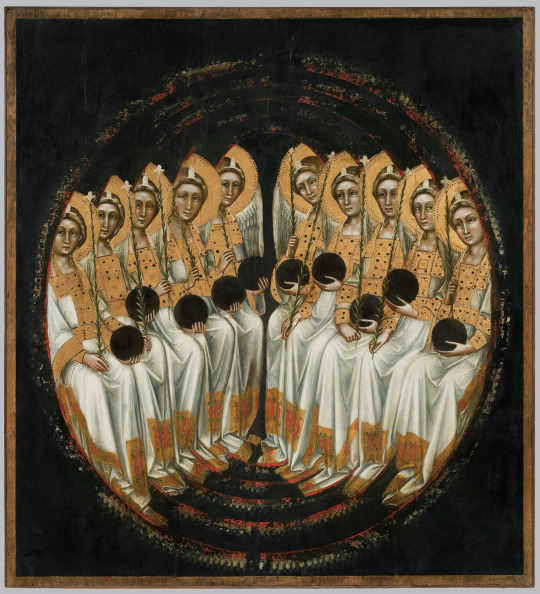
Panel from the Chapel of the Palazzo Carrarese depicting a seated group of ten crowned angels holding black globes and lily flabella
Guariento di Arpo (1310–1370), mid-14th century
Musei Civici di Padova
188 notes
·
View notes